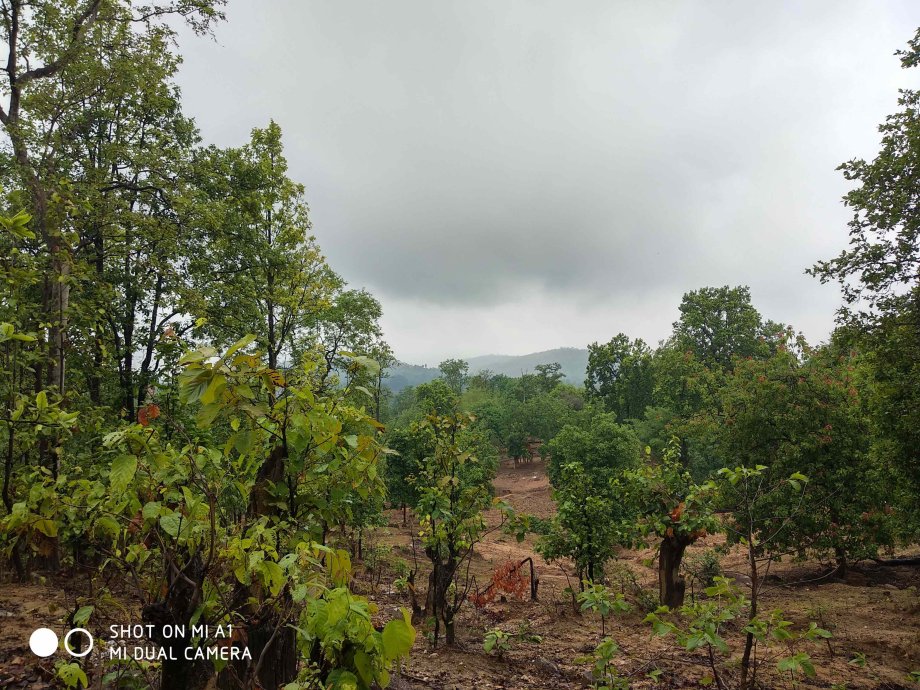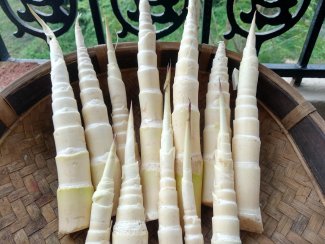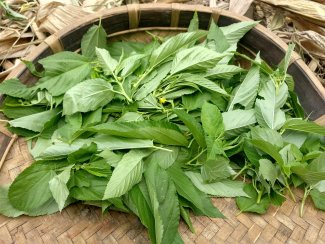

Many countries around the world struggle with food insecurity, forcing citizens to search for nourishment on their own. In some countries, wild food—or food that grows naturally in forests and on common land—is relied upon to supplement the daily caloric intake. Does that food contribute to a healthy diet?
That's the question Jennifer Zavaleta Cheek, an assistant professor in the Department of Natural Resource Management at South Dakota State University, and her colleagues set out to answer.
"Wild foods can contribute to food and nutrition security," Zavaleta Cheek said. "Most previous studies have established correlations between wild food consumption and children's dietary diversity in Africa, but other groups and geographic contexts remain understudied."
For this study, the research team, which included researchers from the University of Michigan, the University of Copenhagen, and the Potsdam Institute for Climate Impact Research, collected diet data from women in two rural districts in eastern India to determine the contributions wild foods had on their diets.
"India has the highest population of undernourished people globally," Zavaleta Cheek said. "In addition, 89% of women in India are estimated to be micronutrient deficient. India shares a quarter of the global hunger burden, so understanding dietary quality dynamics in India has the potential to improve global averages."
According to a 2022 study by the World Health Organization, UNICEF and others, India has approximately 220 million undernourished citizens. Additionally, changing environmental conditions in the region could make food insecurity even more severe.
"Understanding how people can improve their diets is of paramount importance," Zavaleta Cheek said.
The results of the study showed that women who consumed wild foods had a higher dietary diversity score than those who did not. These women were also more likely to consume nutrient-rich, leafy green vegetables.

The time frame for the data collection of this study—June and July—coincided with the "lean" season in India, when crops are planted but not ready for harvest. This is a time period when wild foods are not merely a diet supplement but a necessity for people in this region.
"We found that wild food contributed positively to diets, especially in June and July when the consumption of wild foods was highest," Zavaleta Cheek explained. "Women who consumed wild foods had higher average dietary diversity score and were more likely to consume nutrient-dense, dark green leafy vegetables than those who did not."
The dietary diversity scores of women who consumed wild food were 13% higher in June and 9% higher in July—in comparison to those not consuming wild foods. Unfortunately—as Zavaleta Cheek points out—40% of the women in the study never met the minimum dietary diversity over one year, pointing to a greater need to address poor diets.

"Our findings suggest that wild foods are important to vulnerable women, and the harvest of wild food provides women with a source of a nutritionally important food group (green leafy vegetables) at a time when it is unaffordable at market," Zavaleta Cheek said. "Our findings thus suggest that accessing forests and common lands to collect wild foods can fill a critical gap in the diets of Indian women to improve diet quality, particularly among those who have the lowest levels of dietary diversity."
The results of this study were published in Nature Food, a top academic journal produced by Springer Nature. Funding for this research comes by way of the University of Michigan's Horace H. Rackham School of Graduate Studies, UM's Rackham Graduate School and the Borlaug Fellowship in Global Food Security Weinberg Fellowship for Population Development, Climate Change Dow Environmental Sustainability Fellowship, as well as European Union’s Horizon 2020 Research and Innovation Programme (grant agreement no. 853222 FORESTDIET).
Contributing authors include: Nathalie J. Lambrecht, Charité—Universitätsmedizin Berlin, corporate member of Freie Universität Berlin and Humboldt-Universität zu Berlin, Institute of Public Health, Potsdam Institute for Climate Impact Research (PIK), Member of the Leibniz Association; Bowy den Braber, University of Copenhagen; Nirali Akanachha, Indian School of Business, Hyderabad; Dhanapal Govindarajulu, Indian School of Business, Hyderabad; Andrew D. Jones, University of Michigan School of Public Health; Ashwini Chhatre, Indian School of Business, Hyderabad; and Laura Vang Rasmussen, University of Copenhagen.
The full study can be found here.
- Contact:
- Telephone number: 605-688-6161
Republishing
You may republish SDSU News Center articles for free, online or in print. Questions? Contact us at sdsu.news@sdstate.edu or 605-688-6161.

